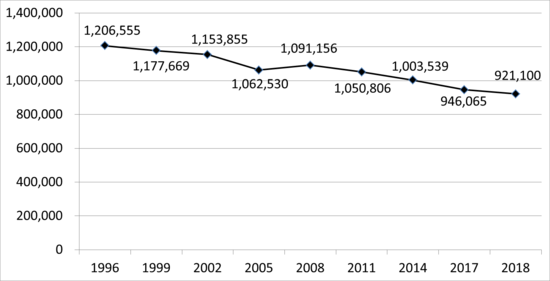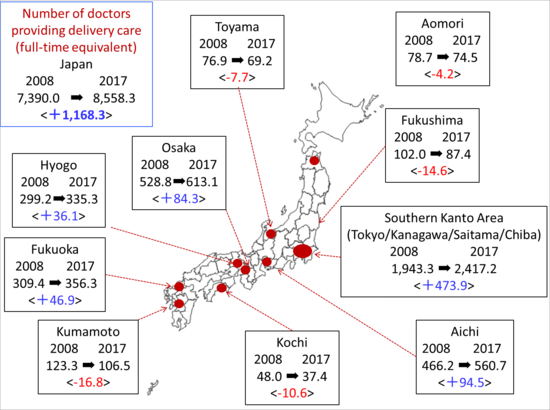Column Finance and the Social Security System 2019.06.17
【Aging, safety net and fiscal crisis in Japan】No.198: Number of Doctors Providing Delivery Care
As shown in Figure 1, the number of births in Japan has been decreasing annually. However, the number of doctors providing delivery care (or a full-time equivalent) has increased by 1,168.3, from 7,390.0 in 2008 to 8,558.3 in 2017 (Figure 2). Despite this growing number of doctors, delivery care problems in areas without medical institutions are often reported as news stories.
The reason for this is that the number of birth specialist doctors is decreasing in rural areas, while in urban zones it is increasing. Of the aforementioned increase of 1,168.3 doctors providing delivery care, 473.9 are located in the southern Kanto regions of Tokyo, Kanagawa, Saitama, and Chiba prefectures. They are also increasing in major metropolitan areas, such as Osaka, Hyogo, Aichi, and Fukuoka. Conversely, the number of doctors is decreasing in Aomori, Fukushima, Toyama, Kochi, Kumamoto, and others, where depopulation is occurring.
Table 1 shows that there is a large gap between the number of hospitals and clinics advocating obstetrics/gynecology and the number that actually provide delivery care. In 2017, 3,327 clinics were advocating for obstetrics/gynecology, of which 2,085 had zero deliveries reported in that year. The rule allowing these hospitals to be able to advocate obstetrics/gynecology without a delivery track record is problematic, in terms of ensuring the quality and safety of delivery care (see Column No. 63).



